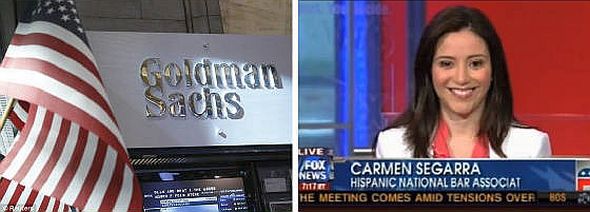“Breaking down all the details and dialogues that transpire in the normal course of banking reviews comes down to the undeniable fact that Goldman is in charge of the process. The ownership of the Federal Reserve, a private entity, is ultimately owned by the shadow families that control the major financial institutions. Only a very naïve analysis or a compromised minion of the financial elite Plutocracy would dispute the power and clout that is applied to the political nature of regulatory oversight.” – J Hall

The cozy relationship between financial institutions and their respective regulators has long been known. Concern from reformers and activists comes from all stripes of ideological perspectives. With the attention that Carmen Segarra, the whistleblower of Wall Street, has gained, the noise from the banking establishment pushes back. Here comes the expected spin from the Fed, The New York Fed Slams Tape-Recording Whistleblower, Says She Was Fired After Just 7 Months Over Performance. Read their Statement Regarding New York Fed Supervision. So what is this controversy all about?
How dare a mere low level regulator document the goings on within the financial establishment, Inside the New York Fed: Secret Recordings and a Culture Clash, writes.
“As ProPublica reported last year, Segarra sued the New York Fed and her bosses, claiming she was retaliated against for refusing to back down from a negative finding about Goldman Sachs. A judge threw out the case this year without ruling on the merits, saying the facts didn’t fit the statute under which she sued.
At the bottom of a document filed in the case, however, her lawyer disclosed a stunning fact: Segarra had made a series of audio recordings while at the New York Fed. Worried about what she was witnessing, Segarra wanted a record in case events were disputed. So she had purchased a tiny recorder at the Spy Store and began capturing what took place at Goldman and with her bosses.
Segarra ultimately recorded about 46 hours of meetings and conversations with her colleagues. Many of these events document key moments leading to her firing. But against the backdrop of the Beim report, they also offer an intimate study of the New York Fed’s culture at a pivotal moment in its effort to become a more forceful financial supervisor. Fed deliberations, confidential by regulation, rarely become public.”
